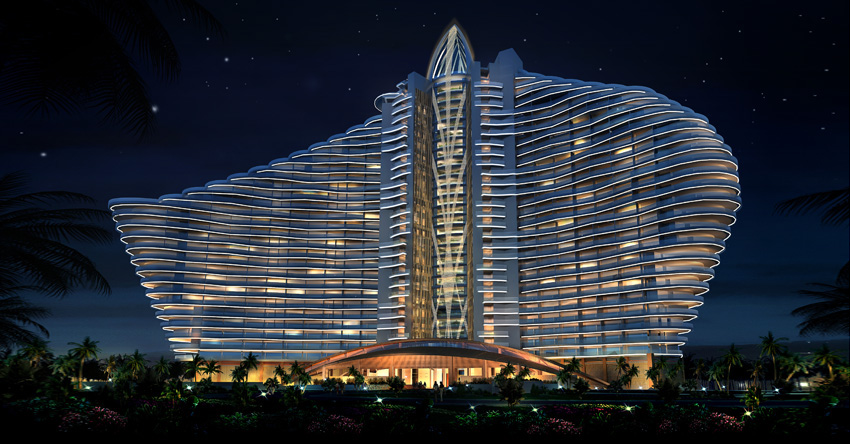Instead of rigidly adhering to the design of Phase I project, the design of this project starts with the overall planning of the hospital, and subordinates local design to general layout, as, without a harmonious general out, no scattered monomers can constitute a good hospital. The planning of the hospital must impose control over both Phase I and Phase II projects, so as to ensure the continuity and organic integrity of the ensure planning, make the most rational use of architectural, HR, equipment and environmental resources and avoid the waste of land, energy or space.
Fully utilizing the elevation difference of the site, the design of Phase I surgical ward building has achieved an effective vertical division of the outpatient area, the emergency area and the inpatient area, and set entrances/exits at different elevations. The Phase II medical ward building, based on the functional expansion demand of the hospital, will extend outpatient, medical technology, inpatient, administrative office, scientific & technological research and teaching spaces. Their entrance/exit setting and partition also utilize the elevation difference of the site to realize split flows. Considering the prominent tumour diagnosis and treatment characteristic of the hospital, the radiation therapy centre, nuclear medicine, hyperbaric oxygen therapy centre and PEOT-OT centre are relatively independent, yet closely connected through convenient accesses.
The organizational framework of the entrances/exits and base perfectly echoes with the structural system. Besides the separation of pedestrians and vehicles by logistics, freight transport, patients and visitors, the patient flow is further classified into outpatient, emergency and emergency rescue accesses, so as to make the best use of the site, maximally shorten the visit/working routes of patients/staff and provide necessary conditions for the hospital’s future development. The separation of medical staff, patients and visitors can extremely improve the operational efficiency of the hospital, and provide a larger degree of transportation convenience and partition guidance for both patients and their families.
Fully utilizing the elevation difference of the site, the design of Phase I surgical ward building has achieved an effective vertical division of the outpatient area, the emergency area and the inpatient area, and set entrances/exits at different elevations. The Phase II medical ward building, based on the functional expansion demand of the hospital, will extend outpatient, medical technology, inpatient, administrative office, scientific & technological research and teaching spaces. Their entrance/exit setting and partition also utilize the elevation difference of the site to realize split flows. Considering the prominent tumour diagnosis and treatment characteristic of the hospital, the radiation therapy centre, nuclear medicine, hyperbaric oxygen therapy centre and PEOT-OT centre are relatively independent, yet closely connected through convenient accesses.
The organizational framework of the entrances/exits and base perfectly echoes with the structural system. Besides the separation of pedestrians and vehicles by logistics, freight transport, patients and visitors, the patient flow is further classified into outpatient, emergency and emergency rescue accesses, so as to make the best use of the site, maximally shorten the visit/working routes of patients/staff and provide necessary conditions for the hospital’s future development. The separation of medical staff, patients and visitors can extremely improve the operational efficiency of the hospital, and provide a larger degree of transportation convenience and partition guidance for both patients and their families.






